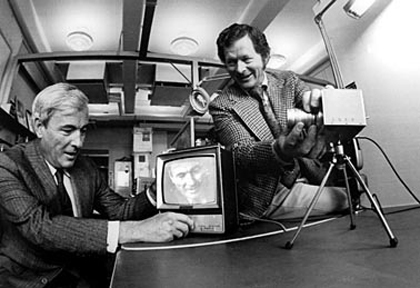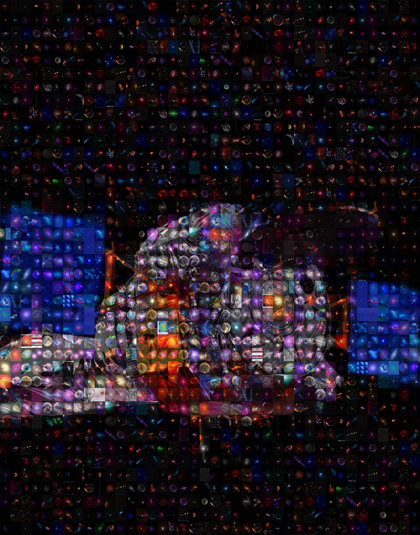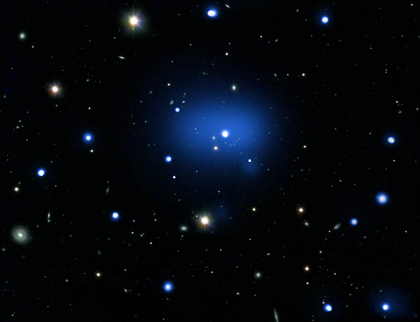Meet an Astronomer: Leisa Townsley
Leisa Townsley has long been a favorite of the Chandra team. Not only does she do really interesting science, she creates some truly spectacular images that we get to share with the public. Leisa is a Senior Scientist at Penn State University. Keep your eyes open for some more gorgeous Chandra images from Leisa and her colleagues, as well as new science results, in the not-so-distant future.
Carbon Atmosphere Discovered On Neutron Star
This Chandra X-ray Observatory image shows the central region of the supernova remnant Cassiopeia A (Cas A, for short) the remains of a massive star that exploded in our galaxy. Evidence for a thin carbon atmosphere on a neutron star at the center of Cas A has been found. Besides resolving a ten-year-old mystery about the nature of this object, this result provides a vivid demonstration of the extreme nature of neutron stars. An artist's impression of the carbon-cloaked neutron star is also shown.
Chandra Source Catalog: Onto the Google Sky (Part 2)
As the Chandra Source Catalog was being finalized for release (documents updated, final verifications being performed, etc.) we had some time to try a little experiment:
As part of the Catalog, we produce so-called "3-color" JPEG images: red representing low energy, green = medium energy, and blue = high energy. We thought it would be interesting to learn enough of the Keyhole Markup Language (kml) to enable these images to be viewed with Google Earth in its Sky mode.
Galaxy Cluster Smashes Distance Record
This is a composite image of the most distant galaxy cluster yet detected. This image contains X-rays from NASA's Chandra X-ray Observatory, optical data from the Very Large Telescope (VLT) and optical and infrared data from the Digitized Sky Survey. This record-breaking object, known as JKCS041, is observed as it was when the Universe was just one quarter of its current age. X-rays from Chandra are displayed here as the diffuse blue region, while the individual galaxies in the cluster are seen in white in the VLT's optical data, embedded in the X-ray emission.
Chandra Source Catalog: Onto the Google Sky (Part 1)
From time to time in the Chandra blog, we like to give a look at the behind the scenes of how things really work around here. As you may suspect, it takes a lot of effort from many, many people to make this mission a success. One area we haven't delved into too much yet is the "data analysis" and other herculean efforts that are required to make the Chandra data as useful and user-friendly as possible to the scientific community.
Meet an Astronomer: Carles Badenes
We've spent a lot of time lately talking about the past 10 years. This has been for an excellent reason, of course: the observatory and the scientists that use it have just done so many great things.
But we don't want to spend too much energy looking back, because there are so many exciting things are still very much in front of us. We recently sat down with some of the best and brightest scientists who are using Chandra and will take the science into its next decade of discovery. We'll share some of those conversations with you here. We hope you sense, like we do, that the best may yet to come.
Three Important Letters and The Nobel Prize
Yesterday, the Nobel Prize for Physics was announced by the Royal Swedish Academy of Sciences. As they often do, the Academy split the prize, with one half being shared by two scientists - William S. Boyle and George E. Smith - for their work on CCD sensors.

William S. Boyle (left) and George E. Smith in a shot taken in 1974. © Alcatel-Lucent/Bell Labs
Black Holes Go "Mano A Mano"
This image of NGC 6240 contains new X-ray data from Chandra (shown in red, orange, and yellow) that has been combined with an optical image from the Hubble Space Telescope originally released in 2008. In 2002, the discovery of two merging black holes was announced based on Chandra data in this galaxy. The two black holes are a mere 3,000 light years apart and are seen as the bright point-like sources in the middle of the image.
Beginning Chandra's Next Decade of Discovery

This week, about 200 scientists are gathered in Boston to describe, discuss, and dissect the past ten years of Chandra science. The symposium, dubbed "Chandra's First Decade of Discovery," has some exciting happenings. First, the astronauts from STS-93, the Space Shuttle mission that launched Chandra into orbit back in July 1999, are here. They are going to participate in a session this afternoon on "The History of Chandra." In addition to the astronauts, key scientists responsible for Chandra being the success that it is will be on hand. Tomorrow, Nobel-Prize winner Riccardo Giacconi will address the conference. Dr. Giaconni won the Nobel for physics for his work in the field of X-ray astronomy, including, of course, Chandra.
New Vista of Milky Way Center Unveiled
A dramatic new vista of the center of the Milky Way galaxy from NASA's Chandra X-ray Observatory exposes new levels of the complexity and intrigue in the Galactic center. The mosaic of 88 Chandra pointings represents a freeze-frame of the spectacle of stellar evolution, from bright young stars to black holes, in a crowded, hostile environment dominated by a central, supermassive black hole.




